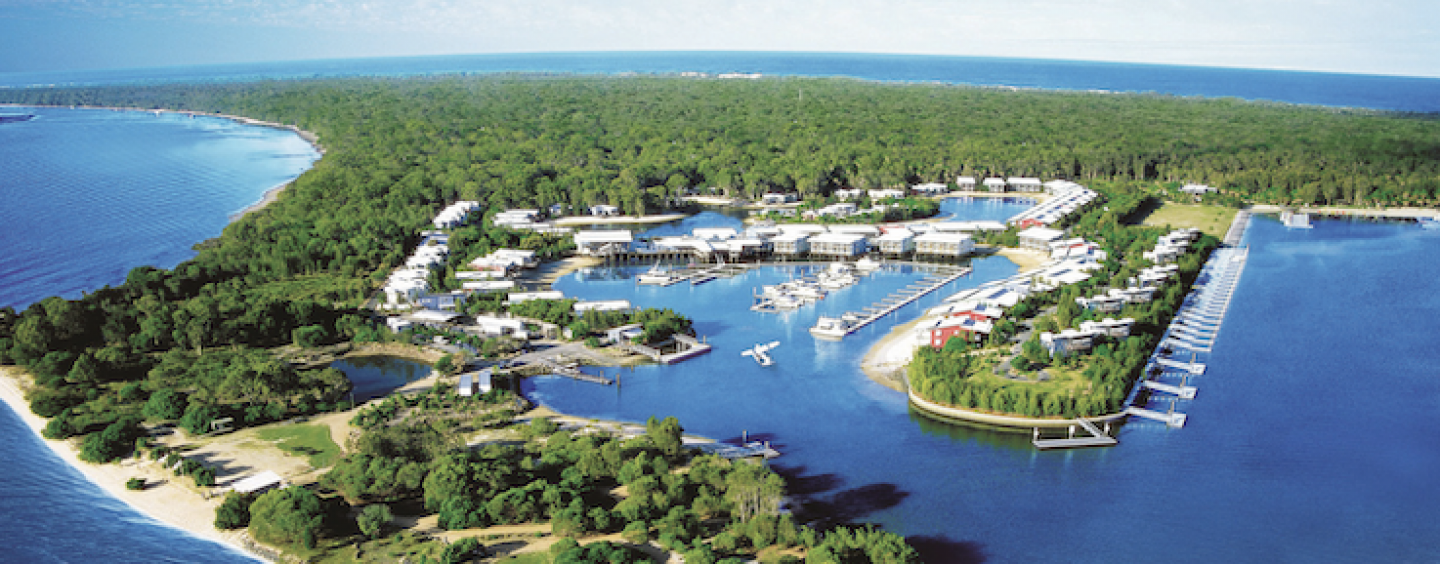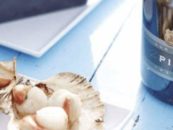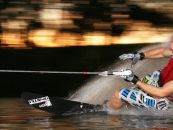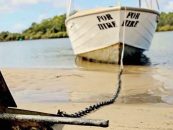These are the words of Ron Clarke, a visionary Gold Coaster, and words that reflect the story of how the Couran Cove Resort team set new standards for the construction of a resort anywhere, inventing, discovering, innovating and assisting nature in a mission to create a holiday destination the like of which cannot be matched.
THE PERFECT SPOT: SOUTH STRADBROKE ISLAND
Couran Cove Resort’s location is perfect, as it does not have the accessibility problems of the other islands, such as Dunk, Hamilton, Great Keppel and Hayman. Just a 15-minute ferry trip out of Runaway Bay, which in turn is but 40 minutes from Coolangatta airport, or an hour to Brisbane airport. This means, you can leave home at 6am from anywhere along the east coast of Australia and be sitting by the pool, cocktail in hand, by 10am.
Five generations of white settlers and countless generations of Aboriginal people have not destroyed its unique qualities. Sensible planning today will ensure that future generations may enjoy its charm as well.
The closeness to the mainland also means that your journey can include the tourist attractions that proliferate the Gold Coast. Yet once on the island, a feeling of complete isolation engulfs you – life immediately becomes less stressful – the sand and the surf take over the psyche.
Guests and visitors are continually amazed at the wonder of their surroundings. For the real hero is South Stradbroke Island itself. Being there, you will see an infinite diversity in the sights and sounds that abound on the island. The resort stirs the soul of every true Australian. Ron said, “The reality is far more spectacular than even I dreamed it could be.”
In 1989, Ron Clarke and his group purchased a freehold of 60 hectares from Bruce Small, who himself retained a much smaller holding around the resort land to build a residential village, now Couran Point.
Ron faced discouragement from everyone. “You can never retain environmental purity and develop a large resort,” Ron was constantly told. The list goes on: it could not be an eco-tourist resort because it was too large, it was too comfortable and too many facilities; it is impossible to overcome the acid sulphate soil, without enormous unviable costs being incurred; barging the building material was going to be too expensive to make the revenue competitive; the indigenous Aborigines will never let you build and if they don’t interfere with your plans, the conservationists and the environmentalists will.
Edited by Andy Kancachian It is worth noting though, that the naysayers also toldRon that the human body could never run a mile faster than four minutes – and yet, more than 500 athletes had achieved this feat by the time the resort was being built!
THE ARCHITECTURE
South Stradbroke Island is a remarkable piece of southern Queensland coastline. Its detachment from, yet proximity to, the Gold Coast mainland provides significant values and challenges for the visitor.
Ron believed no human can match nature in its landscaping, so he unashamedly used what was there and blended with it.
The resort fits into the bush setting rather than the old- fashioned developers’ method of knocking everything down, building according to their pre-planned layouts, and then landscaping around the finished housing with younger immature versions of the trees they knocked down in the first place.
The setting has the most perfect expanse of ocean surf beach, a breathtaking cabbage-tree palm- dominated rainforest, and a peacefulness and serenity that can only be experienced on an island thousands of miles away from civilisation. There are mangroves on the western side bordering the Broadwater; then the rainforest, the melaleuca swamp, the natural bush and the sand dunes – what a site for a resort!
The Broadwater and the inlet to Couran Cove offer safe sailing and an intimate waterway and the surf beach, with its uninterrupted dunal foreshore, stretches north and south to meet the far horizon. Between these waters, there is mature native bushland with secret pieces of tropical rainforest – a special treat. Within this setting, the Maritime Village Hotel is perched, touching the land lightly as a gull might use its legs on the beach.
All the buildings are designed to convey an attachment to the landscape, to infiltrate the bush, to hover over the water of the new cove outline and, more particularly, to make connections via the long jetty which forms a promenade between the inner and outer lagoon. Being on the water is the special quality offered by this resort. It is the essential point of difference to life at home or in the majority of hotels.
The natural features of the land dictated that the resort design be centred around a core hub for the central activities, with the remaining facilities and accommodation radiating out in a series of concentric semicircles. A central focus at the heart of the resort, described by one guest as a ‘water well’, is in biblical times the water well of a village was the central meeting place, where gossip was exchanged, and villagers chatted and schemed. At Couran Cove, the walkway along the weir is where guests can stroll and meet and talk, where the store and the cafes and the restaurants are located. People can meet there, while away the time, eat, shop or book activities.
The buildings possess a character that recognisably belongs to Queensland, displaying white corrugated iron, saw texture stained timber, painted weatherboard, plantation louvre, and batten sunshades in a number of colours and combinations. This is regional maritime architecture at its best, exploiting shadows cast by the subtropical light, allowing the sky-water reflection to lap against the pier structure on which the units are built.
These elements combine to form a coherent village atmosphere where, due to the consistency of approach each building contributes to the whole, the overall impression is strengthened.
The marine apartments and beachfront lodges contribute to the aesthetics with colours of white and blue, yellow-ochre and blue-grey, grey-green, red and weathered hardwood – like a run of original bathing boxes.
Marine apartments are grouped in blocks of four or eight, with all rooms facing the water and sun. Upper levels look across the man-made harbour towards the Broadwater, seen through the masts of assembled yachts sheltering within the marina. They have high ceilings and skylights to maximise natural light and ventilation.
The beachfront lodges have the enjoyable boatshed holiday approach of being able to live over or adjacent to the water – it is all part of the fun.
There are three different eco-cabin designs – Pandanus, Cottonwood and Kites Nest. Their designs ensure that the surrounding bushland encompass and feel part of the living space, often enclosing trees as part of the deck area, yet at the same time providing protection from the elements to ensure comfort, with screened verandah areas.
At Couran Cove Resort, each house or holiday unit has special qualities, but they are all designed to complement neighbouring residences and the group of buildings that are the focal point of the Maritime Village. They all form part of a whole, yet are themselves whole.
THE NATURAL STATE OF THINGS
While the Spa Island permits every opportunity for modern recreation, a walk or jog through the bush to the Surf Club and the remoteness of the Pacific edge provides a natural contrast. In the bush and on the coast, the wilderness of wild on water evokes the healthy contrast of being detached yet paradoxically connected, allowing the natural world and human activity to come together and be celebrated.
Set apart from the Gold Coast by water, Couran Cove has a distinct difference from other resorts, as the ecosystem remains largely intact. Care in tree retention, use of appropriate materials, and dunal beach protection are the key aspects of relatively new standards for tourism projects, where the preservation and sustainability are important to the Australian landscape.
As Ron Clarke said, “Couran Cove is designed to stimulate all our senses. Maximum enjoyment at every level, for all age groups is on offer. We are a hotel with a relaxed recreational focus that is active and passive, urbane and intelligent.”
The Couran Cove Resort site is the most unique environmentally packed site in Australia. It has everything – every type of bushland in the country (except a desert) is represented within its boundaries, from mangroves to rainforest.
This variety of flora brings with it a similar diversity of wildlife – butterflies, birds, frogs, small animals of all kinds – the resort teems with activity.
The challenge of developing a resort that does justice to this jewel of Australian bushland was a thrilling one. “We had to harness environmental groups and use their expertise. We needed to design appropriate buildings that blended into the landscape and were made from materials, which enhanced the setting. And they set out to create systems to preserve, protect and even enhance the pristine beauty of the site.
Environmentalists believed it was essential that nothing was introduced that could be a threat to the harmony of the current ecosystem. The success rate would be higher if they could grow their own stock of indigenous species by harvesting seeds and taking cuttings from selected plants actually growing on site. The obvious solution then was to establish their own nursery.
Plant species endemic to the island would use less water, require minimal or no fertilisers, and reduce the need for long-term maintenance. The landscapes provide corridors for the wildlife.
A greenhouse, powered by solar energy with computer- controlled humidity was immediately established as well as an adjacent protected grow-out area. Very quickly, the monthly productivity rate reached 5,000 plants from seeds and cuttings, including success with rare and difficult to grow, indigenous plants.
One of the successes was the thriving delicate swamp orchid. This was threatened with extinction, as the specimens found on South Stradbroke Island, around the rainforest at Couran Cove, are the only remaining ones in Australia. By the time the resort opened, there were more than 150,000 various types of attractive indigenous trees, shrubs, flowers and grasses in stock, ready to replant around the beaches and eco-cabins.
UNIQUE HOLIDAY EXPERIENCE
The Couran Cove experience is one that allows families to get away from it all and have a really simple old-fashioned holiday full of activity and relaxation, as complete a break from the stress of earning a living as they could ever attain. Ron admits, Couran Cove is designed for Australian families. Australians are unique in their lack of pomposity. They could not give a damn about with whom they are sharing their holidays, as long as they behave themselves and “don’t come the raw prawn”.
Surfing at the pristine and handsomely untouched dune beach yet again offers a distinct experience. One can feel alone on this eastern edge of the island and only the great Pacific Ocean knows you are there.
Ron Clark wanted a place without social barriers, where kids from all backgrounds, and all ages, no matter their creed, colour, politics or wealth, could play together, enjoy themselves and, above all, relax. No concrete jungles or creepy-crawlies (the human type), no nightclubs or four-wheel drive vehicles, no noise, no crime and no drama – just holidays as they used to be.
Couran Cove is indeed as Australian as a slouch hat!
Edited By Andy Kancachian






























